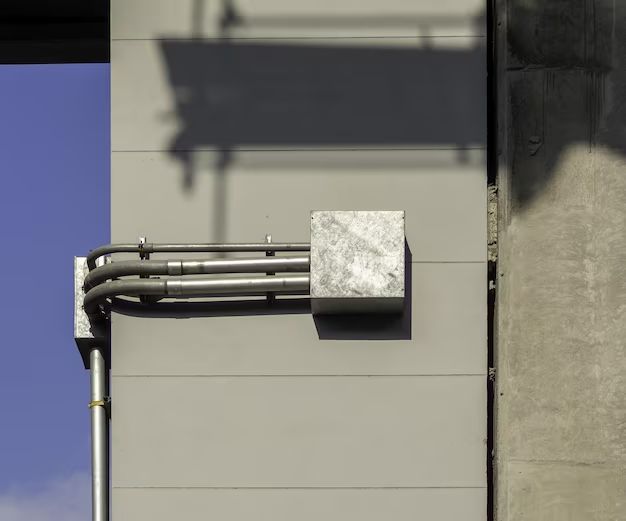Yes, it is possible to connect PVC conduit to a metal electrical box. However, there are some important requirements and considerations when doing this type of connection.
Page Contents
Requirements for Connecting PVC Conduit to Metal Box
According to the National Electrical Code (NEC), there are a few key requirements that must be followed when connecting PVC conduit to a metal electrical box:
- The metal box must be listed and labeled as suitable for the purpose. The listing for the box should indicate if it is approved for use with PVC conduits.
- A proper conduit-to-box connector must be used. There are special connectors made specifically for joining PVC conduits to metal boxes. Using the wrong connector could compromise the connection.
- The connector used must be tight against the box and conduit to ensure a solid connection. There should be no gaps between the connector, box, and conduit.
- An appropriate bushing or adapter must be used on the end of the PVC conduit to protect the wire as it enters the box.
- The box must be properly grounded.
As long as these NEC requirements are followed, it is acceptable to connect PVC conduit to a metal box. However, there are some additional factors to consider for this type of installation.
Considerations for PVC Conduit to Metal Box Connections
Here are some important considerations to keep in mind when planning to connect PVC conduit to a metal electrical box:
- Bonding: The metal box must be bonded to the grounding system. This is required for safety and proper function. A grounding pigtail or other bonding connection must be installed.
- Box type: Some specific types of metal boxes such as aluminum boxes require special caution. Self-tapping screws cannot be used on aluminum, for example. Using the wrong screws can seriously compromise the connection.
- Usage: PVC and metal expand and contract at different rates as temperatures fluctuate. This can put stress on the connection over time. For this reason, PVC to metal box connections may not be ideal for certain high-heat or outdoor applications.
- Moisture: Outdoor or damp locations require extra care to ensure moisture cannot enter the box at the connection point and cause issues.
- Strain relief: The conduit connection should be designed to minimize strain on the conduit itself. Excess strain could eventually cause the conduit to pull out of the connector.
Paying attention to these factors will help ensure a solid, reliable connection between the PVC conduit and metal box.
Making the PVC to Metal Box Connection
Here are some step-by-step instructions for properly connecting PVC conduit to a metal electrical box:
- Choose an appropriate metal box that is listed for use with PVC conduit. Make sure the box is large enough for the number of conduits and conductors you need.
- Select the proper conduit-to-box connector for the size of PVC conduit and type of metal box.
- Determine the required location and mounting for the metal box. Install the box securely to the structure.
- Install a grounding pigtail or other bonding connector to the metal box to ensure proper grounding.
- Cut the PVC conduit to the required length using an appropriate PVC pipe cutter.
- Deburr the cut edge of the PVC conduit so it fits smoothly into the connector.
- Apply solvent cement to the end of the conduit and insert it fully into the connector. Allow time to cure completely.
- Secure the connector tightly to the metal box according to the manufacturer’s instructions.
- Affix a bushing or adapter to protect the conduit interior and conductors.
- Pull the conductors through the installed conduit and make electrical connections as required.
Carefully following these steps will result in a secure, long-lasting connection between the PVC conduit and metal box.
Advantages of Using PVC Conduit
PVC conduit offers a variety of advantages that make it a popular choice for both new construction and retrofit applications:
- Cost: PVC is relatively inexpensive compared to metal conduit.
- Lightweight: PVC conduit is lightweight and easier to install than galvanized rigid metal conduit.
- Non-conductive: Being non-metallic, PVC conduit provides an extra layer of protection against accidental contact with live wires.
- Corrosion resistance: PVC holds up better than metal conduit in wet or corrosive environments.
- Easy modifications: It’s simpler to cut and thread PVC conduit compared to metal.
- Versatility: PVC conduit can be used for a wide range of wiring applications, both indoors and outdoors.
The flexibility and durability of PVC conduit make it an ideal choice. Connecting it to metal boxes gives the benefits of both materials.
Disadvantages of PVC Conduit
While PVC conduit has many advantages, it also has some potential drawbacks to consider:
- Lower strength than metal conduit – more support may be needed.
- Can become brittle and crack over time when exposed to sunlight and weather.
- Not suitable for areas with extreme heat – the PVC can warp or melt.
- Requires special fire-resistant PVC formulations in some fire-rated construction.
- PVC contains toxic chemicals – not an environmentally friendly option.
- PVC has a distinctive appearance that some homeowners may dislike aesthetically.
Weighing the pros and cons of PVC conduit will help determine if it is the best choice for a given wiring project. Coordinate with an experienced electrician when planning conduit and box connections.
Conclusion
Connecting PVC conduit to a metal electrical box is an accepted practice but it must be done properly. Following NEC code requirements and using fittings designed for this purpose will result in a safe, durable connection. Consider factors like temperature, exposure, and box material when planning a PVC to metal box transition. With careful installation and the right materials, PVC conduit can be securely joined to metal boxes while taking advantage of the unique benefits offered by each material.
